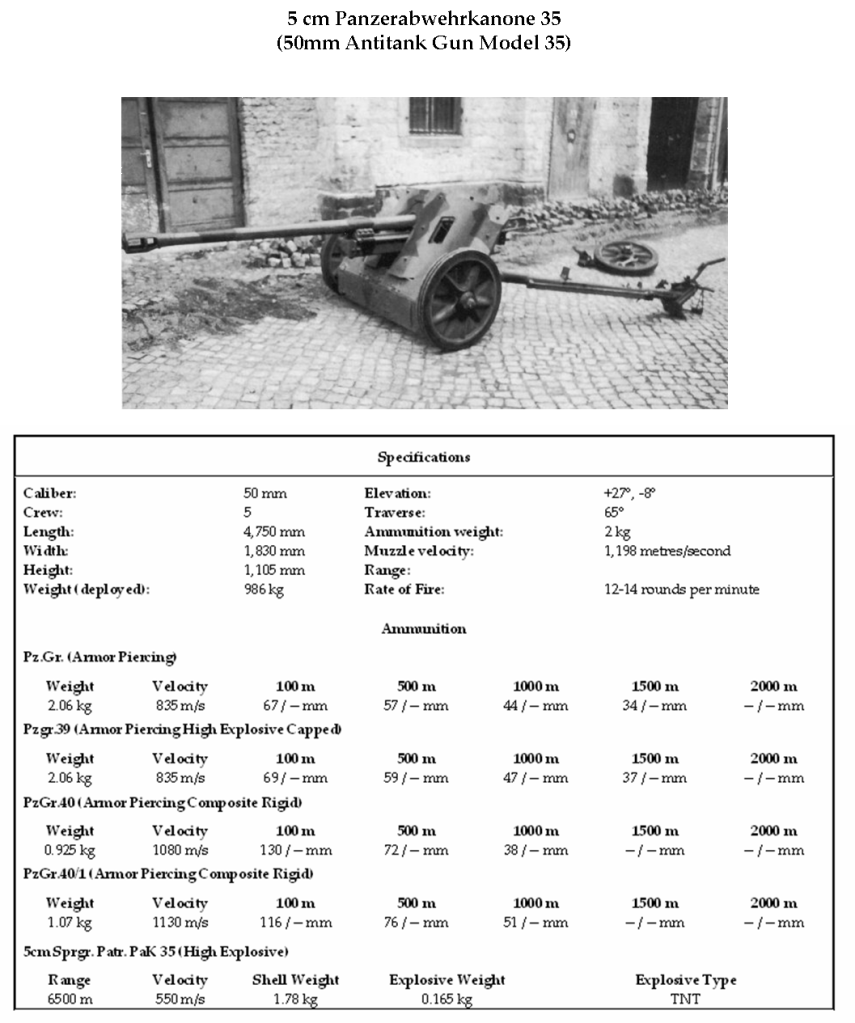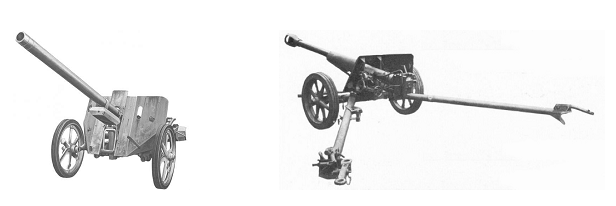Heer Anti-Tank Weapons, 1935
Anti-tank rifles
After the ending of the Treaty of Versailles limitations on German armaments in 1929, the Heer began adding previously banned weapons to deal with the threat of hostile tanks. The first part of this re-arming was to equip units with anti-tank rifles, intended to damage or destroy the relatively lightly-armored tanks available during the Great War and into the early 1930s.
13mm PanzerBuchse 18 - This rifle was a newly constructed version of the Great War's Mauser T-Gewehr M1918 anti-tank rifle. This anti-tank rifle was issued in relatively small numbers, as it was thought marginal for the role.
15/7.92mm PanzerBuchse 32 - This rifle was another interim solution, being merely a PanzerBuchse 18 redesigned to fire the 15/7.92mm Gerlich taper-bore round. This anti-tank rifle was issued in relatively small numbers, as it was planned to be replaced with a more capable, and less painful, semi-auto rifle.
15/7.92mm PanzerBuchse 34 - The definitive German anti-tank rifle designed to fire the 15/7.92mm Gerlich taper-bore round. Unlike the preceding anti-tank rifles, the PzB 35 fired semi-automatically from a five-round magazine (the PzB 18 and PzB 32 being single shot rifles with no magazine).
Anti-tank guns
After the ending of the Treaty of Versailles limitations on German armaments in 1929, the Heer initially decided to rely on anti-tank rifles and on infantry and light field guns to perform the anti-tank role. As long as any possible threats used Great War period tanks, this policy was sufficient, but it became more and more clear over the course of the early 1930s that something with more capability, but still light and handy to maneuver, would be needed.
28/20mm Schwere Panzerbuchse 34 - The first dedicated anti-tank gun adopted by the Heer after the Treaty of Versailles, this lightweight anti-tank gun was adopted in 1934 and fired the 28/20mm Gerlich taper-bore round. Very lightweight and easily maneuvered, it is called a "Heavy Anti-tank Rifle" even though it is mounted on a two-wheeled carriage with a split trail just like an anti-tank gun. An even lighter weight version, lacking the gun shield and with smaller wheels, is under development for the Luftwaffe's Fallschirmjaegers.
50mm Panzerabwehr Kannone 35 - The second dedicated anti-tank gun adopted by the Heer after the Treaty of Versailles, the adoption of this weapon was prompted by examinations of the amount of armor carried both by the new Panzers adopted by the Heer and reports about those being adopted by Germany's neighbors. The gun itself is, in contrast to the Schwere Panzerbuchse 34, a conventional weapon, consisting of the barrel of the 50mm gun adopted for the Panzer III mated to a modified breech and a new split-trail mounting and recoil system. A good deal heavier than the Schwere Panzerbuchse 34, it does offer superior capability at longer ranges. It was standardized in late 1935.



